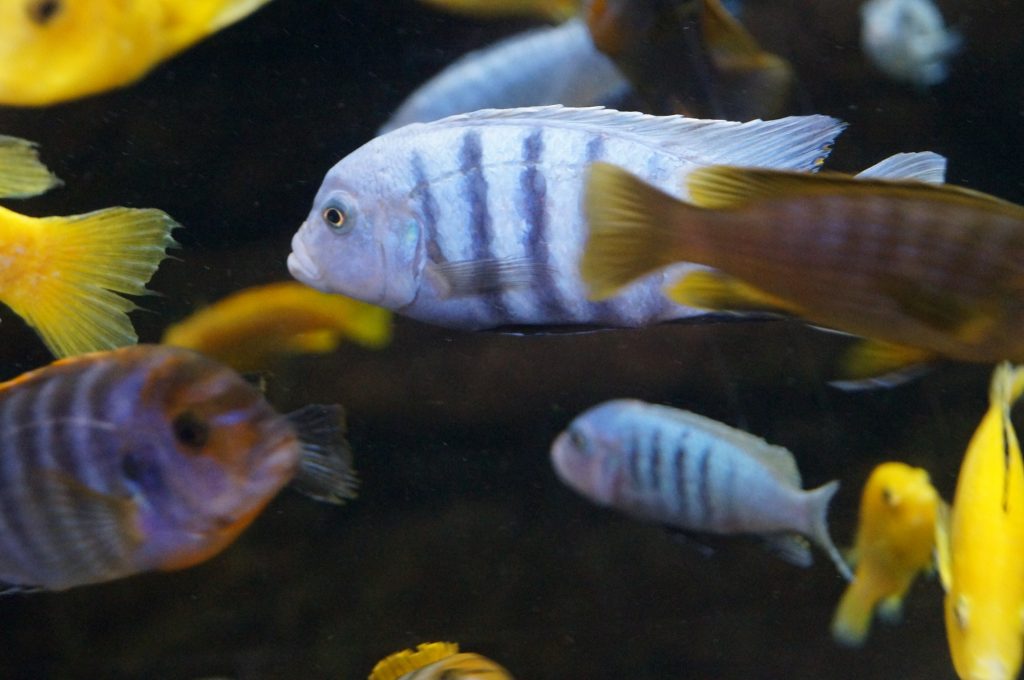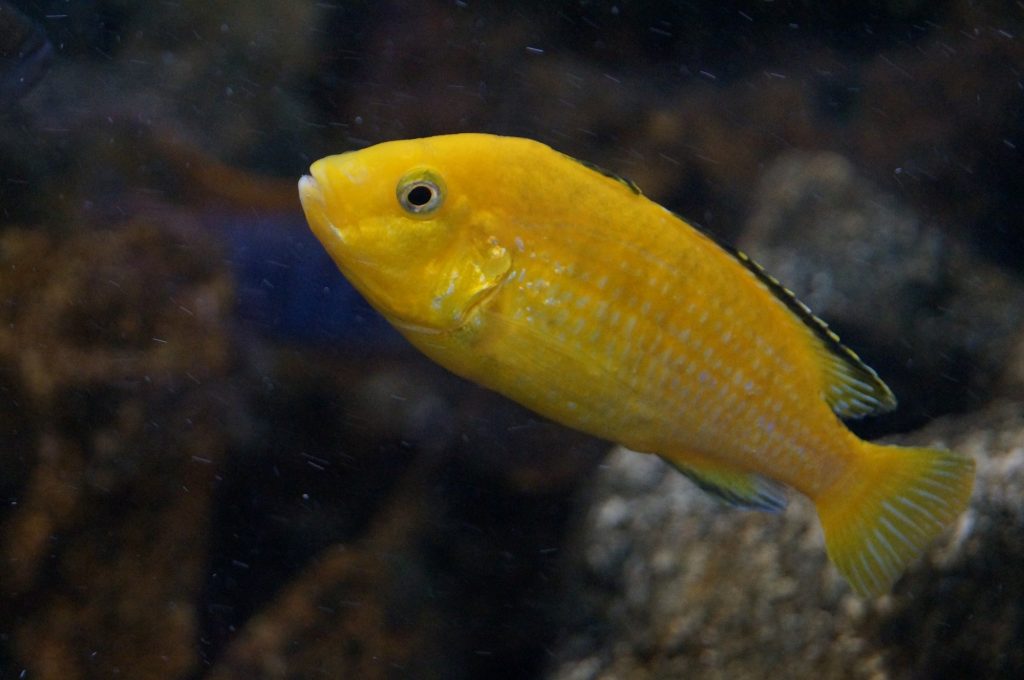While most travel to Africa for lions, zebras and hippos. Those in the know would tell you it’s also one of the best places for safaris of a different kind. Because, amid the landlocked wilds of Malawi, you’ll find one of the world’s most diverse and precious freshwater lakes. The inimitable, invaluable Lake Malawi.
It’s impossible to overstate the natural significance of Lake Malawi. The fourth-largest freshwater body in the world. Hosting over 1,000 species of fish, with new discoveries happening seemingly every other week. Also, it isn’t just the sheer volume of species which impresses. The lake is a goldmine for biodiversity. Also, most of its inhabitants are only found in Lake Malawi.
To celebrate this natural treasure, we’ll look at what makes it so special. We’ll also discuss our wonderful Lake Malawi exhibit. Where you can experience the beauty of this great African lake right here at Blue Planet Aquarium.
Where is Lake Malawi?
Found in southeast Africa between Malawi, Mozambique and Tanzania, with much of it sitting within the beautiful hinterlands of Malawi. Thanks to its immense size, the waterway is one of Africa’s Great Lakes. It stretches for over 11,000 square miles, holding 7% of the Earth’s fresh surface water.

Lake Malawi formed millions of years ago, when the Earth’s crust tore apart, creating the spectacular Rift Valley. Over thousands of years, freshwater rose within this mighty gorge. Creating a vast body of water which today accounts for much of Malawi’s eastern border. This provides a natural divide between Malawi, Tanzania and Mozambique.
Without seeing Lake Malawi, it’s difficult to fathom its scale. But to give you an idea, the lake is around 400 miles long – roughly the distance between London and Edinburgh. It’s 47 miles across at its widest, well over twice the length of the UK’s largest lake, Lough Neagh. So yes, it’s big alright.
How Many Species of Fish Are There in Lake Malawi?
Lake Malawi is no ordinary lake. It’s home to an incredible diversity of life, with over 1,000 species of fish (and counting) in its waters. That’s more species than the lakes and rivers of Europe combined.
And it isn’t just the diversity of species which makes Lake Malawi so special. The lake is home to fish not found anywhere else on the planet. A fact which makes it one of the most valuable water ecosystems on Earth in terms of natural diversity.
Of Lake Malawi’s many freshwater species, easily the most beloved is its collection of over 600 species of Cichlid. These colourful fish are found all over the world but are abundant in Lake Malawi. This is proof of its credentials as a truly unique underwater ecosystem.
In recognition of its exceptional biodiversity, the waterway was designated a UNESCO World Heritage Site status in 1980. Despite this, its unique fish stocks are in decline. Overfishing, invasive species and a growing population are affecting its diversity and native species.
What Are Cichlids?
Cichlids are a type of freshwater fish found in rivers and lakes from Latin America to Africa. Currently, there are around 1,650 known species of cichlids. Though, biologists estimate that there could be thousands more yet to be discovered.

Cichlids are unique for several reasons. Firstly, they’ve evolved rapidly, with Lake Malawi hosting over 600 known species alone. Throughout all Africa’s Great Lakes, cichlids continue to draw fascination from biologists. Who believe they are important in our understanding of speciation and evolution.
The rate at which cichlids evolve and generate new species is dizzying. A trait rarely found in any other species group on Earth. It’s estimated a new species of cichlid is produced every 20 generations. This means their diversity in water bodies such as Lake Malawi continues to grow.
For this reason, cichlid species vary hugely in size, colour and appearance. Resulting in them being a popular aquarium fish. From tilapia, an important food-stock fish, and predatory perch-sized species, to smaller, brightly-coloured examples like the freshwater angelfish. The natural diversity of cichlids makes them highly unique among other freshwater species. Small wonder they attract such attention and make Lake Malawi an essential destination for biologists and fish hobbyists alike.
In Lake Malawi, in particular, the most prevalent group of cichlids is the rock-dwelling haplochromines. Known locally as ‘mbuna’, or ‘rockfish’. There are reputed to be over 295 types in the lake, and they’re by far the easiest to spot. Sticking to the shallows, their brightly-coloured scales set against the clear waters and the sandy lakebed.
Are Lake Malawi’s Fish Endangered?
Sadly, despite the rapidity at which cichlids evolve and the region’s status as a protected heritage site, Lake Malawi is suffering. Now, 1 in 10 fish in the lake are classified as endangered, with overfishing the greatest threat to its unique diversity and ecosystems.
Over the past two decades, the human population has doubled on the banks of Lake Malawi. This has led to a dramatic rise in overfishing. Something which is not only damaging the fragile ecosystems within the lake. But also, leading to a drop in the size and diversity of its rare species.
And overfishing isn’t the only threat to the lake’s native wonders. Pollution and agriculture are also damaging unique habitats and biodiversity. While invasive predatory species, like the Nile perch, now pose a significant threat to the future of the lake’s endangered inhabitants.
Thankfully, conservation work is ongoing, with biologists in the region doing an excellent job of bolstering local understanding of the lake’s natural value. Large parts of Lake Malawi are now protected. In these protected areas, fish numbers and diversity are recovering rapidly.
Experience Lake Malawi at Blue Planet Aquarium
At Blue Planet Aquarium, we’ve long recognised the beauty and diversity of Lake Malawi. Prompting us to create a special exhibit to showcase the lake’s spectacular and rare species. Within our wonderful Lake Malawi exhibit, you’ll have the opportunity to see countless species of cichlids. Which offers you a glimpse into the unique variety, colour and appearance of these beloved fish.
As well as enjoying the wonders of Lake Malawi, you can also learn more about the region’s diverse species and habitats as part of a daily talk and presentation by our in-house experts. This is a great opportunity to gain insight into the value of Malawi’s freshwater fish stocks, as well as the ongoing conservation work in place to safeguard their numbers.
We hope you’ve enjoyed this guide to Lake Malawi and its extraordinary biodiversity. For more interesting features and insights, check out the Blue Planet Aquarium blog, or visit the homepage for visitor information and ticket booking.
